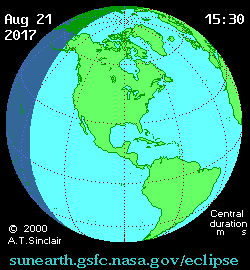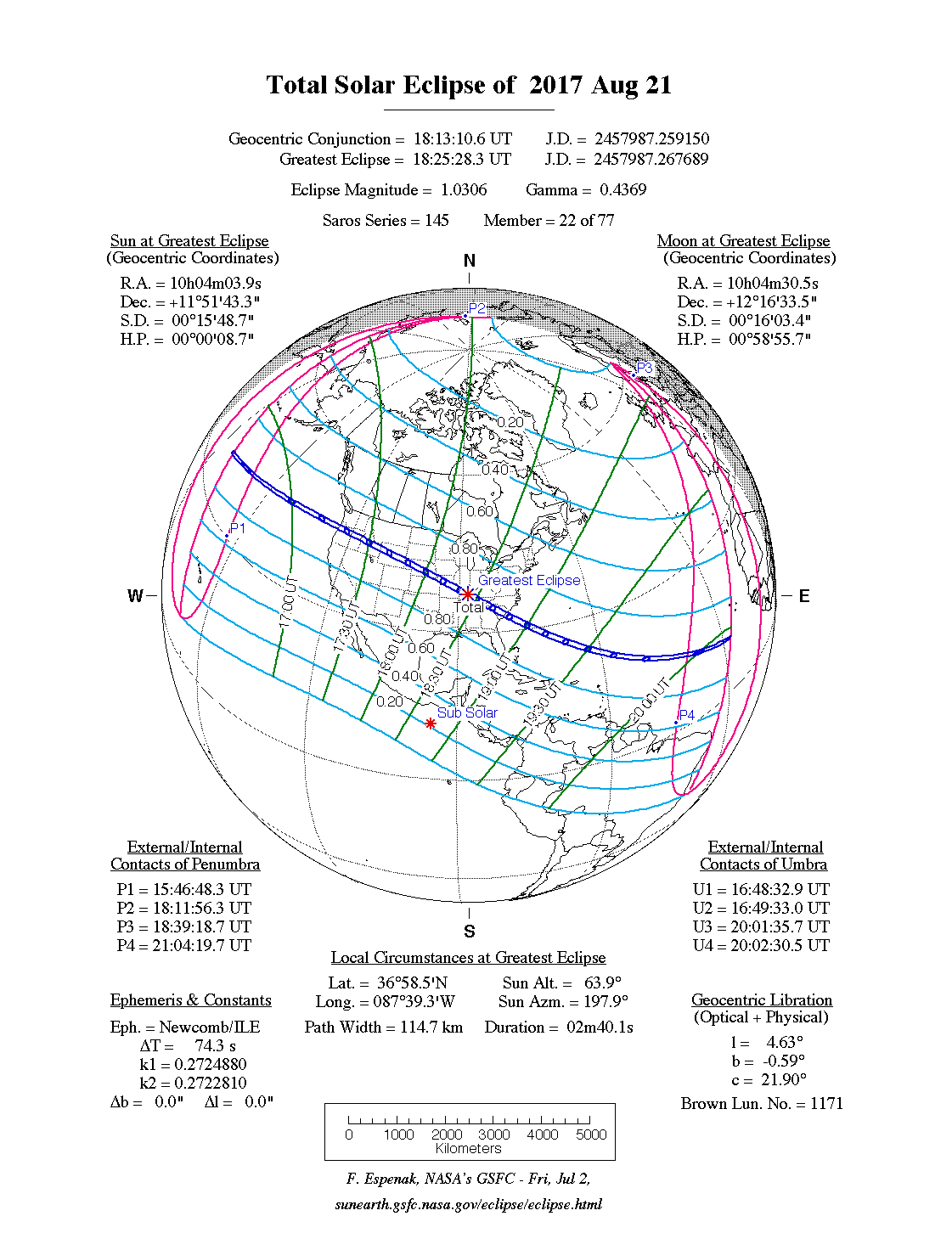Partial solar eclipse on August 21 2017 (Morocco)

The Moon information shown here applies to Rabat, Morocco on Monday, August 21, 2017. (Local time Africa/Casablanca)
| Moonrise to moonset | 13h41m |
| Moonrise | 06:24 |
| Moonset | 20:05 |
| Distance to the center of the Sun | 151,330,034 km |
| Distance to the center of Earth | 372,013 km |
| Moon ilumination (at midnight) | 0.9% |
| Lunar phase | waning |
| Current zodiac sign the Moon | Leo ♌ |
| Moon age (days past new moon) | 28.6 |
According to international time UTC, a solar eclipse will occur on August 21, 2017 which will be visible in some parts of the world. The following shows the cities in Morocco from which the eclipse could be visible (note that the following is a short list of some of the main cities, the eclipse may be visible from other cities not listed here). The date and local time of the event shown below.
| City | Eclipse visible? | Phase |
|---|---|---|
| Rabat | Yes | Partial |
| Tangier | Yes | Partial |
Information about this eclipse

Information of the Greatest Eclipse

This image shows the moments of external and internal contacts with the Moon's penumbra (and Moon's umbra when applicable) as well as the horizon and geocentric coordinates of the Sun and the Moon as well as the place and moment of the greatest eclipse. Some of the information from the image has been condensed in the following table. Please regard that the information in the following table applies only to the place of maximum eclipse, latitude 37.0N and longitude 87.7W, on 2017-08-21 at 18:26:40 (UT).
| Date (UT) | 2017-08-21 |
| Time (UT) | 18:26:40 |
| Latitude | 37.0N |
| Longitude | 87.7W |
| Gamma | 0.4367 |
| Magnitude | 1.0306 |
| Saros | 145 |
| Sun alt. | 64 |
| Sun azi. | 198 |
| Path width | 115 |
| Central Dur. | 02m40s |
Eclipse schedule in Morocco
The following table shows the schedule and phases of the partial solar eclipse of August 21, 2017 in Morocco. For each city we have assigned a time zone which is very precise and it takes into account Daylight Saving Time (if applicable).
Sun Alt.: Excellent Good Low Too low
| City | Details | ||||||||||||||||
|---|---|---|---|---|---|---|---|---|---|---|---|---|---|---|---|---|---|
| Event date | Partial eclipse starts | Sun Alt. | Total eclipse starts | Max. eclipse | Sun Alt. | Azimuth | Total eclipse ends | Ends partial eclipse | Sun Alt. | Mag. | Obs. | ||||||
| Rabat (UTC 1) | 2017-08-21 | 19:48:41 | 3 | - | 20:04(s) | 0(s) | 285 | - | 20:04(s) | 0(s) | 0.206(s) | 10.9% | |||||
| Tangier (UTC 1) | 2017-08-21 | 19:47:44 | 3 | - | 20:02(s) | 0(s) | 285 | - | 20:02(s) | 0(s) | 0.185(s) | 9.3% | |||||
if present, (r) means the eclipse is in progress at sunrise, while (s) means the eclipse is in progress at sunset.
You can read the table above as follows: On August 21, 2017 in Rabat (UTC 1), an eclipse of type partial solar eclipse will start at 19:48:41, the maximum eclipse will occur at 20:04(s) when the Sun reaches an altitud of 0(s)° and azymuth of 285°;this event will come to an end at 20:04(s) and will have a magnitud of 0.206(s) (the magnitude of an eclipse is the ratio of the apparent size of the Moon to the apparent size of the Sun during an eclipse) and an obscurity of 0.109(s) (the fraction of the Sun obscured).
We must take into account the altitude of the sun, for example, in Rabat, due to the low altitude of the Sun (0(s) degrees) this solar eclipse will not be very obvious.
your city is not listed?
To obtain eclipse information for a particular city, you may load the interactive world map. In addition, the world map shows the path of totality and the coordinates of the greatest eclipse. (Due to some limitations, this map may sometimes not load)
Source: Eclipse Predictions by Fred Espenak and Chris O'Byrne (NASA's GSFC).
Protect your eyes
Observers must be very careful while viewing the solar eclipse. Our advice is to never look at the Sun with the naked eye.For safety, you must always use sunglasses, telescopes and binoculars with special filters. Never use these equipments without protection as the Sun's ultraviolet and infrared light may harm your eyes or cause blindness if you look at the Sun directly.



